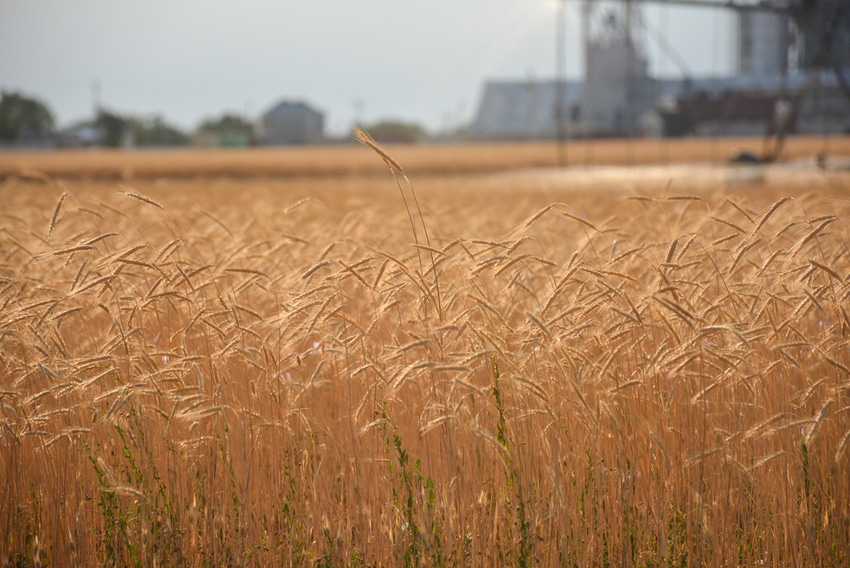March 6, 2019

“Rain makes grain,” and more grain tends to result in lower prices. Rain may be one of several reasons 2019 harvest forward contract wheat prices declined 69 cents between Feb. 1 and Feb. 26.
On Feb. 1, 2019, the Burlington Oklahoma wheat harvest forward contract price was $5.01. On Feb. 26, 2019, the Burlington forward contract price was $4.30. By contrast, the Feb. 25, 2018 Burlington wheat harvest forward contract price was $4.42. The 2018 Burlington forward contract price peaked March 6 at $5.08. The cash price peaked at $5.89 on August 6, 2018.
The USDA Feb. 26, 2018 Crop Condition Report showed that, compared to the same time last year, the 2019 hard red winter (HRW) wheat crop is in significantly better condition than the 2018 crop. On Feb. 25, 2019, 45 percent of the HRW wheat acres were rated good to excellent, compared to 22 percent Feb. 26, 2018. The reports showed that 7 percent of the 2019 wheat crop was rated poor to very poor, compared to 31 percent of the 2018 crop.
For the 2018 HRW wheat crop, 22.92 million acres were planted, 16.95 million acres were harvested (73.9 percent of planted acres), the average yield was 39.1 bushels per acre, and production was 662 million bushels.
The five-year average HRW wheat yield is 40.1 bushels per acre, and the five-year average percent acres harvested is 76.6. The USDA’s January Winter Wheat Seedings report indicated that 2019 HRW wheat planted acres are 22.2 million. Using average percent harvested acres and average yield, 2019 HRW wheat production would be 682 million bushels.
PREMIUM FOR PROTEIN
On Feb. 22, 2019, there was no KC protein premium for 14 percent protein hard winter wheat, compared to 11 percent protein wheat (Milling and Baking News, Feb. 26, 2019 issue). On Feb. 23, 2018, there was an 80 cent per bushel premium for 12.6 percent for higher protein wheat (Milling and Baking News, Feb. 27, 2018 issue). On June 29, 2018, there was a 38 cent premium for 12.6 percent protein wheat compared to 11 percent protein wheat (Milling and Baking News, July 3, 2019 issue).
The February 2019 USDA WASDE (World Agricultural Supply and Demand Estimates) report shows that 2018/19 marketing year HRW wheat use is projected to be 757 million bushels, compared to production of 662 million bushels, resulting in a 90 million bushel reduction in HRW wheat stocks.
A protein premium during the 2019 HRW wheat harvest will depend on the average protein level of the 2019 harvested wheat. A below average protein level may result in a premium for higher protein wheat or a discount for below average protein wheat. Above average protein wheat may result in no premium or discount, but a higher basis.
Another factor that may impact the protein premium is hard red spring wheat stocks that are projected to increase 71 million bushels. This relatively high protein wheat should be available to blend with lower protein HRW wheat, which could result in lower HRW wheat prices.
BLACK SEA WHEAT
Probably the most important market factor impacting wheat prices is the availability of Black Sea wheat for export. Reports indicate that Russia will export 1.36 billion bushels, and Ukraine will export 606 million bushels this marketing year. Reports indicate that both Russia and Ukraine should have the export wheat shipped by the end of April.
The three-month weather forecast is for average temperatures with slightly above average moisture, which should be good for yields. Prices may or may not recover. But, the one thing that would probably result in even lower prices is a 2019 HRW wheat harvest with below average test weight and protein.
About the Author(s)
You May Also Like






